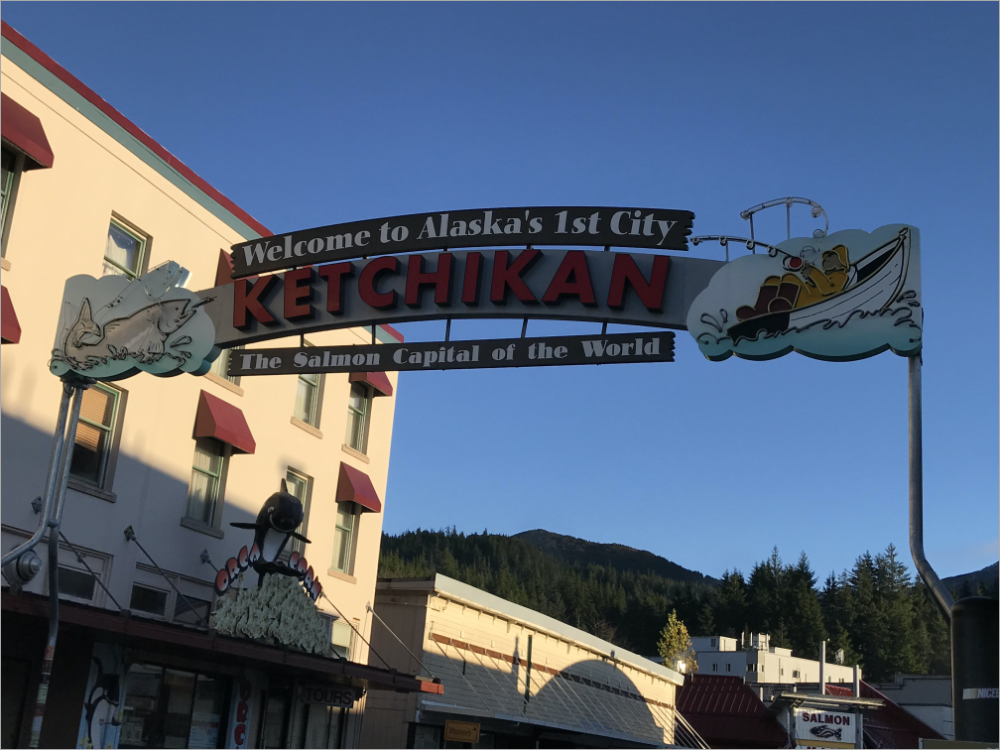Ketchikan has long been a blue-collar town and there were some expectations the Peel jury would represent its blue-collar origins. The Ketchikan of the ’80s had three major employers — fishing, timber and government. Working folks dominate two of the three employer types. As a commercial fisherman, John Peel was as blue-collar as it gets.
In these parts, in fact, fishing came first. Ketchikan Creek — the name comes from the Tlingit natives who settled along its shores — had long been an Alaska Native fishing camp. In 1886, white settlers opened the first cannery, and built four more by 1912. As the city closest to the Lower 48, it attracted fishing boats from as far south as Washington State. The proximity to the Lower 48 also earned Ketchikan its nickname, “Alaska’s First City.”

Timber came later, with the Ketchikan Spruce Mill opening in 1903 and reaching its heyday during World War II, when spruce was in demand for wartime airplane construction. Perched as it is on the southern edge of the 17 million acre Tongass National Forest, Ketchikan was poised for even greater growth. That boost came in 1954 when the Ketchikan Pulp Mill was completed and forest products became one of the area’s largest employers.
Timber and fishing don’t always get along, however. Clear-cut logging can muddy the streams where salmon spawn and threaten fish runs. But timber provides year-round jobs and fishing doesn’t. The government often finds itself in the middle.
The federal government manages the forests and determines how much timber can be taken from public lands. The state government, meanwhile, sets quotas for how many fish can be taken. The tension between these forces is a constant in places like Ketchikan. Few potential jurors could escape them: their livelihoods depended on the outcome of government decisions.

Indeed, jury selection loomed large enough to become a major preoccupation for both sides. Phillip Weidner wanted a jury that looked like his client, taking a narrow definition of a “jury of one’s peers.” He was not about to go through jury selection without that fight.
In a motion made just days after Judge Schulz decided not to dismiss the indictment, Weidner asked the judge to raise jury pay from $25 to $100 a day. Arguing his motion before the court, Weidner once more raised the specter of the state using its vast economic resources to force his client to trial and diminishing the effectiveness of his counsel.
Weidner lost his demand for higher jury pay. Schulz refused to dip into state court funds, saying that he had no objection to raising jury pay, but could find no money available in the state court system for Peel’s “unprecedented request.” The judge added that he wouldn’t use his “discretion to treat Mr. Peel differently than I treat other people.”
Responding to the judge’s ruling, Weidner accused the state of excluding the “average working man” from deliberating on Peel’s guilt or innocence. While he was at it, he demanded that more Alaska Natives be represented on the jury, something he said couldn’t be achieved by holding the trial in Ketchikan. And he again raised the charge that the state was waging “economic warfare” against his client.
The defense seemed to get proof of its economic argument within the first days of jury selection. One woman was dismissed because her employer wouldn’t pay her during the trial. Worse, they would lay her off if she served.
Excerpts from the unpublished original manuscript, “Sailor Take Warning,” by Leland E. Hale. That manuscript, started in 1992 and based on court records from the Alaska State Archive, served as the basis for “What Happened in Craig.”
Copyright Leland E. Hale (2020). All rights reserved.

Order “What Happened In Craig,” HERE and HERE. True crime from Epicenter